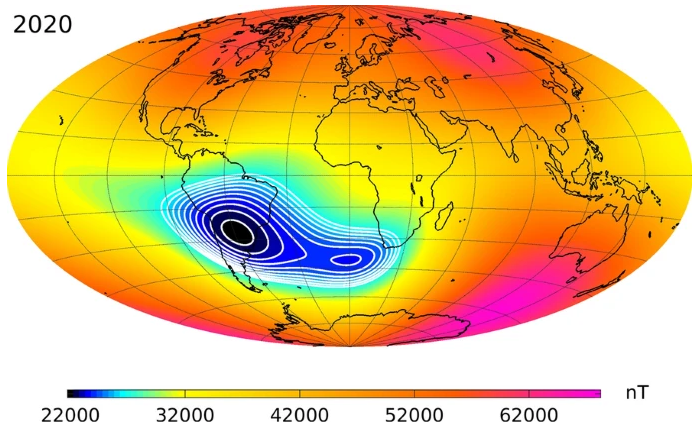
Introduction
The South Atlantic Anomaly (SAA) is a significant geological and space phenomenon that has gained attention due to its impact on satellites and other spacecraft operating in low Earth orbit. As we continue to rely heavily on technology for communication, navigation, and scientific investigations, understanding the implications of the SAA is more pertinent than ever. This article will delve into its location, effects, and future predictions, shedding light on why this anomaly in the Earth’s magnetic field matters.
What is the South Atlantic Anomaly?
The South Atlantic Anomaly is a region where the Earth’s magnetic field is significantly weaker than the global average. It stretches from Brazil’s southern coast to parts of the southern continent and extends into the African coast. This phenomenon is attributed to the Earth’s core’s dynamics and the tilt of its magnetic field.
Effects on Satellites
The SAA poses various challenges to satellites and space missions. Since the magnetic field is weaker in this region, it increases the exposure of spacecraft electronic systems to cosmic radiation and charged particles. This can lead to operational disruptions, including temporary malfunctions in onboard instruments and systems. For instance, NASA reported partial system outages for their satellites in the region, leading to valuable data loss during critical experiments.
Recent Developments
In recent years, studies have reported that the SAA is expanding and shifting eastward at an alarming rate. Researchers have observed that the boundaries of the anomaly are broadening, which poses additional risks to both existing and future satellite missions. This ongoing shift is concerning as it allows more spacecraft to enter the region, increasing the likelihood of damage and operational issues.
Conclusion: The Significance of the South Atlantic Anomaly
The South Atlantic Anomaly represents a fascinating intersection of geology and space science, impacting our daily technology. Understanding its effects is essential for satellite engineers and scientists who must devise strategies to mitigate risks associated with the SAA. As we forecast its evolution based on trends observed in recent studies, it becomes clear that the SAA will remain a critical area of interest in the study of Earth’s magnetic field and its implications for space exploration. In essence, as our reliance on space technology grows, comprehending phenomena like the SAA becomes increasingly vital to ensuring the integrity and functionality of our technological advancements.



